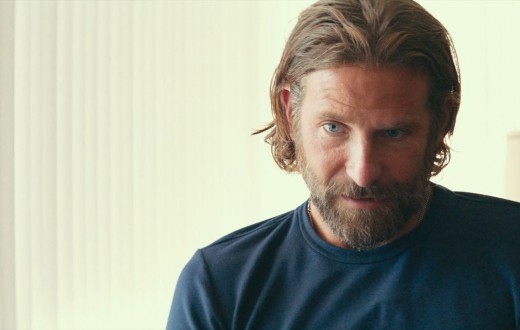“And therefore, since I cannot prove a lover,
To entertain these fair well-spoken days,
I am determined to prove a villain,
And hate the idle pleasures of these days.”
–William Shakespeare, “Richard III”
For a certain breed of actor, one of the greatest joys in life is playing the bad guy. They relish it. Think actors like Anthony Hopkins or Michael Shannon: although they are of course talented actors who can show nuance, depth and complexity in conflicted characters, the truth is you can see that they take a certain feral joy in being bad.
It’s like when you were a playing as a kid: who wants to be the good guy? How boring to wear the white hat and save the girl tied to the tracks from the oncoming train. Where’s the fun in that?
Better to ride into town on a mighty black steed to rob a bank and wreak havoc on the villagers, and then take off to your secret hideout in the hills to count your loot.
And when it comes to the grown-up version of this kind of playing–“the craft of acting,” we call it, a pretentious term for “playing”–putting on the black hat is a particularly delicious kind of joy. That’s not to say it’s easy, however. But here are a few ways to help you be good when you set out to be bad!
1. No one thinks they are the “bad guy”
With the exception of Shakespeare’s Richard III, who gleefully announces to the audience that he has decided to be as downright evil as possible, no one actually thinks they’re the bad guy. Genghis Khan, Joseph Stalin and Adolph Hitler all thought they were doing the right thing. However mad their plans and monstrous their actions, they sought to succeed just like anyone else: for themselves, for their families, for their people and for history–the fact that they were self-delusional to the point where they could justify their horrific actions notwithstanding. Keep this in mind when digging into roles of more pedestrian bad guys: from their perspective they’re the good guys. Of course they’re fooling themselves, which is part of the fun. But to put your character in an “evil” box is to render him or her flat and two-dimensional. You can’t play “bad;” you can only play actions and objectives. When Stanley Kowalski hits his wife Stella in “A Streetcar Named Desire,” he doesn’t do so out of a desire to be “a bad guy.” He doesn’t think, “Hey I’m evil, I’m going to evil it up and smack my lady around because that’s how evil mofos like me roll.” No, he does so out of fear of losing Stella and losing control of his home now that his sister-in-law Blanche has moved in, and out of fear of losing face in front of his friends. He is a small, scared man attempting to reassert his power via violence. This is a deeply troubled human being, of course. But that’s the key: he is a human being, flawed like the rest of us. To write him off as “evil” is facile and reductive. As actors our job is to empathize with the characters we play and tell their stories with truthfulness to their situation, not our own. Realize too this is in no way meant to justify the actions of characters like Kowalski–nor those of murderous dictators for that matter. It’s just that if you want to play a character who has particularly dark demons, you have to make every effort to view the world from their point of view, however disturbing it may be.
2. Keep them separate from yourself
That said, if you are going to play a “bad guy,” take care of yourself first. It is vital not only to you the actor but also to the character you are portraying that you keep the role in a separate box from yourself. The best analogy I’ve ever heard for what it’s like to play a less-than-charming character–or for playing any character, really–is to think of it as putting on and taking off a light jacket. A jacket isn’t you, even if it conforms to your contours and covers you for a time. It’s merely something draped over your shoulders, and something which you have the power at any moment to discard. And you must discard the character at the end of the night, or you will run into trouble. Sometimes less experienced actors think that in order to play the role of an asshole or a psychopath in a genuine manner they must live and breathe it, 24/7. This is not only bad for you psychologically, and bad for your relationships and everything else in your life apart from when you are on camera or on stage, it’s bad acting. In fact it’s not acting at all; if you’ve decided to be a character who is an asshole, that just makes you an asshole, not an actor playing one. Better to learn how to adopt the objectives and goals of the characters you play, play them when the time comes, then set them aside afterward as you would a costume or prop. It’s not yours–why hang onto it after you’ve left the stage or the set?
3. Research
Perhaps more so than with any other, research is the key to playing the type of characters you would never invite home for Thanksgiving dinner. As mentioned above, having empathy and even love for the characters you portray–even “bad guys”–is vital to forming a real connection and thus bringing them to life in a genuine manner. This is your chance to play armchair detective: what was it like in the era you are portraying? What was this person’s background and experience leading up to the moment when we meet them in the script? Even if there’s not a lot to go on and you’re forced to extrapolate backwards in time from the script, this can be a very beneficial exercise for bringing a character to life. Back to the “Streetcar” example: Stanley is solidly blue collar, a truck driver who served in World War Two and is now living in a rough working-class neighborhood in late 1940s – early 1950s New Orleans. Obviously, the way he thought of and treated women–and the way women were thought of and treated by society as a whole–were very different than they are today. No matter how much we may disagree with those long-ago values, they are the reality we are being asked to portray, and it’s our job to do so with the utmost truthfulness and adherence to the character and the playwright’s intent. To soften him up because we don’t like the values he represents–or, for that matter to remake Stella into a modern feminist–may give you a warm fuzzy self-righteous feeling inside, but it is dishonest and a bit ridiculous, and it does a disservice to the piece and to the audience alike.
Portraying any character is all about love, finding a way to love this person no matter their flaws, and to empathize with their choices, or at least understand why they made them. The challenge increases exponentially when you are asked to portray a “bad guy,” but the work remains the same.







